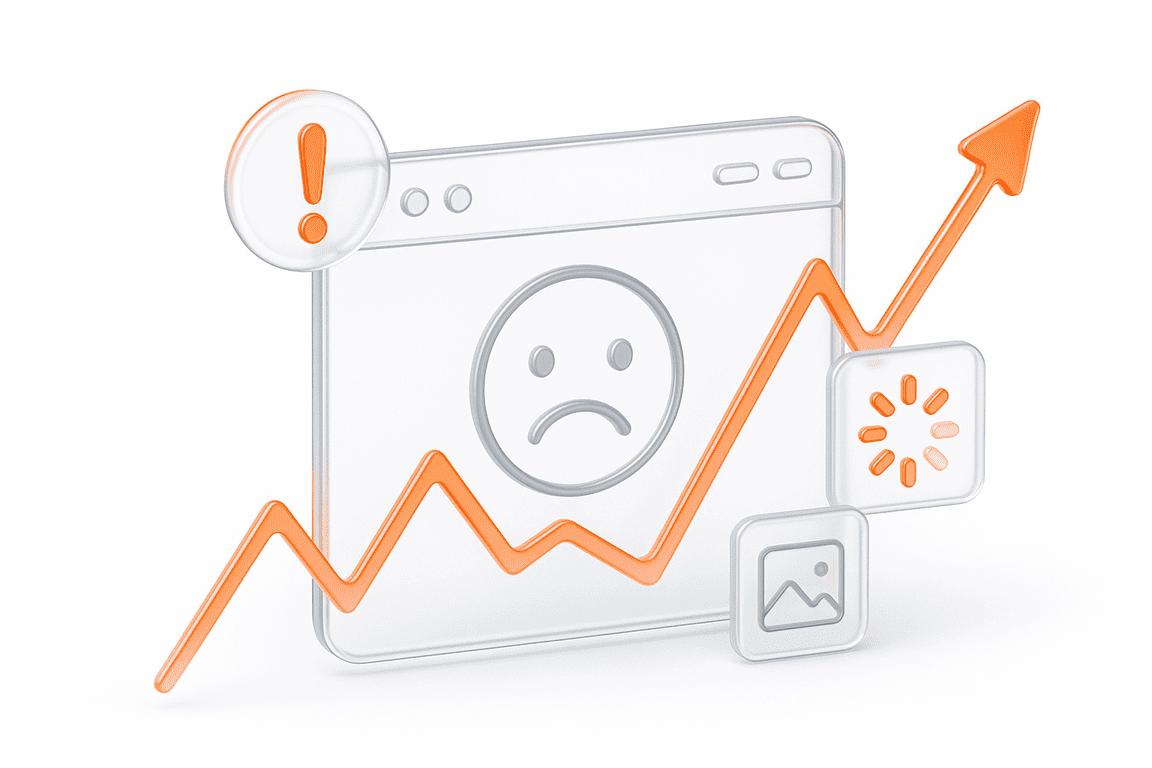The Ultimate Guide to Usability Testing for E-Commerce Websites
As social restrictions prevent businesses from selling products physically, they are going digital to stop their businesses from stagnating. E-commerce websites are increasingly becoming a favorite thing of most retailers especially during Christmas, Black Friday, and product drops (Learn more about what is product drop in e-commerce). However, because every business is trying to grow on the digital landscape, competition amongst these websites is extremely high.
This is why business owners desire websites that attract customers and allow them to sell more products. A website’s usability plays a crucial role in facilitating buyers during the purchase. It helps them navigate the website more easily, guiding them throughout the buyer’s journey.
That said, ensuring website usability is not as easy as it seems. Even when developers have a thorough understanding of the buyer’s psychology design and design features that accelerate the buying process, they can fall short. Without extensive usability testing, software teams can never ensure whether a website offers the best experience to its users or not.
However, e-commerce usability testing is slightly different since e-commerce websites are not like typical websites. It requires a lot of input from prospective users and required to push customers towards the end of the sales funnel.
In this article, we will discuss the key steps for performing usability testing for e-commerce websites development.
What Is Website Usability Testing?
In simple terms, usability is defined as the ease of use of any object. However, in web design, website usability is the ease with which your website visitors can navigate. A website optimized for usability facilitates the visitor in competing whatever goals they wanted o achieve on the website without wasting any time.
Visitors to e-commerce websites are seeking information on the products they want to buy. However, they only care about websites that help them do so as fast and effortlessly as possible. They have little tolerance for slow and complex websites.
Most visitors don’t take more than 10 to 15 seconds to leave a website that doesn’t offer them value. Likewise, if a website takes more than 3 seconds to load, the majority of users don’t bother waiting and switches to a better alternative. This is why ensuring website usability is a critical aspect of interface designing.
Website usability testing is just the process of ensuring that the website has good usability. So testers must ensure that it keeps users longer on the web page and makes them return once they are done with the website.
Importance of Usability Testing
Because most businesses use websites as touchpoints to reach customers, most customers judge websites based on the experience they had online. For e-commerce websites, most of the purchase is done through the online interface.
Therefore, without usability testing, these businesses can face several problems. Poor usability affects how much the website converts leads. It throws prospects away from your products and drives them towards your competitors as a result.
Different Types of Website Usability Testing
We can measure the usability of a website by selecting a bunch of users and assigning them to perform specific tasks. Although the process has much more complex steps, seeing how well easily users can perform a task tells us a lot about the product’s usability.
That said, there are three basic ways you can perform usability testing on your website:
Moderated Testing
Moderated testing is performed under a specific set of conditions and environments. Here a moderator observes the users, guides them, prepares questions, and takes notes. The setting for these kinds of tests is mostly a quiet place, such as a lab where both parties can have a dialogue without interferences.
Moderated Remote Testing
Moderated remote testing is the same as moderated testing in nearly every manner, except that we perform it remotely. Moderators and users are not in the same place, but they still maintain contact on a video call and share screens with each other. There are several software in the market that allow you to conduct moderated remote tests.
Unmoderated Remote Testing
In unmoderated remote testing, users interact with the website in the presence of an online tool. The online tool gives various metrics that help you measure the usability of a certain website. Although it offers a lot of great flexibility to usability testing, these tools cannot replace experienced testers.
How to Perform Website Usability Testing
While there are many web usability testing methods, the following are some of the most diffused techniques:
A/B Testing
In A/B testing, software usability testers evaluate a website’s usability by comparing user experience on two different versions of the same website.
Heat Maps
Also known as “click tracking,” heat maps highlight the areas of the screen where the mouse movement has been the most on the screen.
Surveys
Surveys are a common technique for gaining the opinion of users or prospective customers regarding a product. They are a quick way to get direct feedback, but offer testers in-depth insight regarding the website’s usability.
Paper Prototyping
Development teams create paper prototypes to get the general idea of the initial website design. By using paper mockups, developers can test website usability in the development phase. However, this technique only gives developers a minor overview of the design as it doesn’t show the performance of working e-commerce.
Eye Tracking
Eye tracking shows how well CTAs and different design elements of your website are placed. Specialized software follows the motion of the users’ eyes to see how they navigate through a website.
The 5-Second Usability Test
Most first-time visitors only spend a few seconds on your e-commerce website unless they find it useful. Testers understand this and this is why they apply what’s called a five-second usability test.
In this test, they show to expose the website to users only for five seconds. After that, we will ask the users some questions based on what they remember from the image. Although this kind of feedback won’t give you a detailed analysis of the picture, it can tell you what most people think about your website’s usability after their first glance.
Key Features of Usability Testing for E-Commerce Websites
The idea of usability in e-commerce can be a bit abstract for many people. To help you understand website usability more clearly, let us show you key aspects you should focus on to improve e-commerce website usability:
Navigation Usability
You should always remember that bad navigation experience is the primary reason why users bounce back from e-commerce websites. It’s important for visitors to enjoy a seamless and pleasant experience while navigating your website. They shouldn’t encounter dead links and complex selection options.
User Interface
The look and feel of the website adds a lot to the customer experience. You should shape your website’s user interface based on the expected target audience for your products. Moreover, u must ensure that your website design performs well on different devices.
Contents and Graphics
Websites need to strike a balance between graphics and content. The products you display on your e-commerce website need to be clearly visible, whereas the content should be clear and divided with an intuitive logic.
Images and Videos
The human mind is attracted to visuals. If your website has videos and images, users are more likely to engage with your website.
Fast-Loading Web Pages
No one wants to wait when they are out buy products online. Multiple studies have show that users are happy when a website is fast and responsive. This is why even Google accounts for a website’s loading speed when showing people search results for products.
Call-to-Actions (CTA)
CTAs are what drive people to your products. These buttons are so important that paying special attention to them is mandatory. Optimizing CTAs on your e-commerce website is essential for its performance.
Headlines
Even small web design elements can have a significant impact on your e-commerce website’s usability. This is why testers need to ensure that they use the same headline image for both their official website and social media. Your headlines and your overall web design must be consistent with your brand’s theme. Even minor elements like this can help you provide better customer experience.
Forms
Forms are ways to engage with your customers online. Keeping them simple & easy to use can help you maintain a steady line of leads. This is why testing how usable your forms are is an essential part of website usability testing.
Product Information
Similar to headlines, creating clear and efficient product descriptions can help you boost website performance. Seeing how well you place product descriptions along with the pricing is important for ensuring website usability.
6 Steps for Usability Testing in E-Commerce Websites
As long as you have a solid plan supported by clearly written test tasks, you can easily reach your target audience effectively. You can follow the six steps below to perform usability testing for your e-commerce website:
1. Determine What to Measure
As a starting point, testers have to state their goals of testing. This includes which actions you are evaluating and which part of the website you need to target.
Whatever your testing goal is, you should evaluate each of them separately. At the same time, you should define each goal clearly so you can measure the test well and analyze the results more effectively.
2. Identify the Best Method
Choose the method that fits your requirements the best. For e-commerce websites, performing moderated remote testing might be the best way. E-commerce website visitors belong to different groups of people as it allows you to access high-quality with participants from around the world.
3. Create a Task Scenario and Set Your Success Rate
Testing scenarios are often similar to those we have listed in the first step. After you set the scenario, you need to set up perimeters to determine your success rate. For instance, if you want to see if users can pick the payment methods they want, you can evaluate whether the website shows payment methods valid for the user’s country.
4. Find the Participants
Finding the right participants for website usability testing is important for your business. In most cases, five participants are ideal for every testing session. However, this amount can vary depending on the testing method you use and the development stage of the e-commerce website.
In earlier stages, you may use the Hallway Method – where you pick random participants to test the website. That said, as development continues, you have to choose participants that fits well to the user persona and can show you accurate results. A user persona defines the characteristics, needs, and goals of real users, as well as how they interact with your website.
5. Conduct the Test
During the test, it’s important to be consistent in terms of the order and task. Even when you are testing unmoderated remote users, giving them clear and concise instructions is important.
6. Analyze and Report Your Findings
Based on the type of testing you used, you can summarize your results and organize reports. You can create a customer journey map that defines how customers engage and interact with your website. These user stories give you deeper insights into the customer’s behavior and let your team create websites with better usability.
Conclusion
Usability testing has a significant impact on the performance and success of your e-commerce website. Good usability motivates visitors to engage with your products and helps your e-commerce business grow.
However, identifying critical problems with the website’s usability is not easy. Unless you have proper training and knowledge, resolving underlying usability issues can be hard.
PFLB is dedicated to provide e-commerce website testing, QA services for mobile applications, enterprise apps, microservices, as well as other web technologies. We have served over 500 companies across a wide variety of domains that range from retail and technology to finance and healthcare.
With years of experience at our disposal, our testers have learned how to employ smoke testing strategically. Our in-depth knowledge of various testing procedures helps us find hidden issues in different components of the software and deliver the best solution for your business.
Besides Test Automation, the company has expertise in other core software testing services, such as Performance testing services, Mobile Testing, Integration Testing, Usability Testing, and much more.
To learn more about the company feel free to visit our website at PFLB.
Related insights in blog articles
Professional vs. In-House Website Load Testing: Which One Do You Really Need?

Thriving in the fierce digital space is what every business strives for. While high-traffic events like targeted marketing campaigns, paid ads, product launches, and seasonal spikes certainly help win over customers and skyrocket sales, they also abruptly expose hidden website vulnerabilities to users. To assess website readiness for traffic surges and prevent weaknesses, such as […]
How Website Performance Impacts E-Commerce Sales and Cart Abandonment

Every e-commerce store has mere milliseconds to make the right impression on shoppers. When prospects land on a product page, they assess every single metric, and e-commerce website performance and speed are the most critical ones. In most scenarios, impatient users will bounce instantly — at the slightest hint of latency caused by high loads […]
10 Signs Your Website Can’t Handle Traffic Spikes: Everything you need to know

Your campaign goes live, clicks start pouring in, and traffic shoots up fast. It’s the moment you’ve been waiting for, until everything slows down. Pages take ages to load, checkout freezes, and visitors disappear before they can buy. It’s a frustrating twist: the success of your marketing draws in more people than your website can […]
Why Averages Lie: Mathematical Methods for Load Testing

Relying on “average” metrics alone makes load testing surprisingly inaccurate. In this article, we’ll show how to avoid the usual traps and walk through practical techniques for mathematically modelling a workload profile, from analyzing variance and correlations to spotting Simpson’s paradox and validating the final model. When a company moves to a new system, the […]
Be the first one to know
We’ll send you a monthly e-mail with all the useful insights that we will have found and analyzed
People love to read
Explore the most popular articles we’ve written so far
- Top 10 Load Testing Tools for 2025: The Deep Dive Sep 9, 2025
- Cloud-based Testing: Key Benefits, Features & Types Dec 5, 2024
- Benefits of Performance Testing for Businesses Sep 4, 2024
- Android vs iOS App Performance Testing: What’s the Difference? Dec 9, 2022
- How to Save Money on Performance Testing? Dec 5, 2022